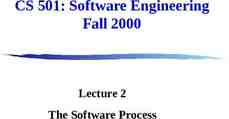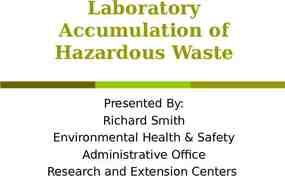Cosmic Dust Experiment (CDE) Science and Calibration David
12 Slides3.47 MB

Cosmic Dust Experiment (CDE) Science and Calibration David James University of Colorado/LASP 303-492-5208 [email protected] Your Position, Science and Calibration Your NameDavid James GATS CDE Pre-Ship CDR, September Review 14, October 2004 6, 2005 1

Science Goals Monitor the cosmic dust flux variability : CDE measures dust flux using an impact detector. Measurement at S/C is directly related to dust input to the mesosphere. Your Position, Science and Calibration Your NameDavid James GATS CDE Pre-Ship CDR, September Review 14, October 2004 6, 2005 2

Dust Detection using PVDF Depolarization induced current Volume Polarization P Volume Polarization P Volume Polarization P Depolarization Cavity v m PVDF Film Al/Ni Contacts Your Position, Science and Calibration Your NameDavid James GATS CDE Pre-Ship CDR, September Review 14, October 2004 6, 2005 3

Calibration and Validation Plan Calibration is performed in two steps: Electronics (DN to charge) – Performed at LASP 9/16-9/20 PVDF Detectors (Charge to mass, given velocity) – SDC calibration with dust accelerator in Heidelberg, Germany is complete – Proposed CDE calibration in early 2006 Your Position, Science and Calibration Your NameDavid James GATS CDE Pre-Ship CDR, September Review 14, October 2004 6, 2005 4

E-box Calibration Calibration of Electronics was performed at LASP before (abbreviated) and after the environmental (full) testing Tested full dynamic range of each signal chain 104-1010e charges at 21 individual values (100 events at each of the 21 values injected externally). Tested over full range of E-box temperatures (-26 to 50oC) – Full calibration at -26, 0, 15, 30, 50 C – Pre-Environmental Calibration at 20 oC Repeated for all 14 channels Total Calibration generated 14 x 5 x 21 1476 data sets of 100 hits. Your Position, Science and Calibration Your NameDavid James GATS CDE Pre-Ship CDR, September Review 14, October 2004 6, 2005 5

Calibration Setup – External Charge Injection Environmental Chamber Injection Circuit to Simulate Detector Signal Data Collection Your Position, Science and Calibration Your NameDavid James GATS CDE Pre-Ship CDR, September Review 14, October 2004 6, 2005 6

Sample CDE Calibration Curves Your Position, Science and Calibration Your NameDavid James GATS CDE Pre-Ship CDR, September Review 14, October 2004 6, 2005 7

Simpson-Tuzzolino Curve N [e] 3. 8 1 017 m1.3 [ g ] v 3 [km / s ] Your Position, Science and Calibration Your NameDavid James GATS CDE Pre-Ship CDR, September Review 14, October 2004 6, 2005 8

CDE will maximize impact rates CDE detector area 0.1 m2 300 hits/day @ 0.1 m threshold 3 hits/day @ 1.0 m threshold Science requirement: 100 hits/week 0.7 m threshold mass Your Position, Science and Calibration Your NameDavid James GATS CDE Pre-Ship CDR, September Review 14, October 2004 6, 2005 9

PVDF Detectors 100 hits/day 15 km/s To meet science requirement of 100 hits/week must have a noise floor of 106 electrons. 10 2 13 100 hits/week on 0.1 m2 Your Position, Science and Calibration Your NameDavid James GATS CDE Pre-Ship CDR, September Review 14, October 2004 6, 2005 10

CDE Noise Characterization Noise floor well below required 106 electrons. 9*105 e level CDE satisfies its science requirements! Your Position, Science and Calibration Your NameDavid James GATS CDE Pre-Ship CDR, September Review 14, October 2004 6, 2005 11

Calibration Summary Charge injection calibration has been completed and is ready for integration into ground processing software Determination of noise floor via zero threshold noise collection verifies that CDE meets science requirements CDE is ready to ship and meets science requirements Your Position, Science and Calibration Your NameDavid James GATS CDE Pre-Ship CDR, September Review 14, October 2004 6, 2005 12






